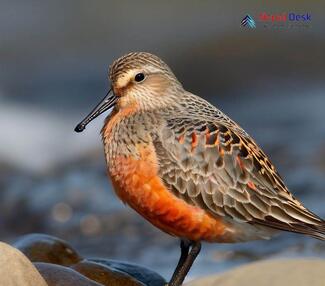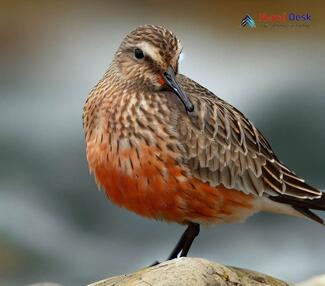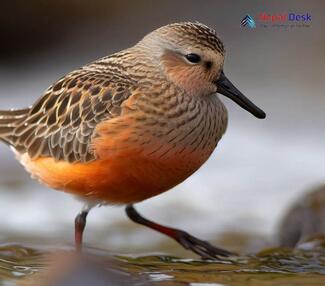The Red Knot (Calidris canutus) is a remarkable shorebird known for its long-distance migration and stunning plumage. This captivating creature piques the interest among bird enthusiasts and researchers due to its unique physical features, habitat preferences, diet, and distribution. In this article, we'll delve into the enthralling world of Red Knots – from their taxonomy to their presence in Nepal.
Taxonomy and Physical Features
Belonging to the Family Scolopacidae within the Order Charadriiformes, the Red Knot is a medium-sized sandpiper with a global distribution. The species is classified into six subspecies, each exhibiting slight differences in size and coloration during their breeding season. Overall, the Red Knot boasts a distinctive appearance with its reddish-chestnut mottling on the upper parts when in breeding plumage. Non-breeding adults, on the other hand, exhibit a pale-grey plumage.
Habitat
Red Knots are known for their incredible migratory journey from their high-Arctic breeding grounds to the southernmost coastlines of South America. During this migration, they can be found in various habitats such as mudflats, sandy beaches, estuaries, and even grasslands. These adaptable birds require specific stopover sites to rest and refuel along their migration route.
Diet
Primarily feeding on benthic invertebrates like small crustaceans and mollusks during migration & wintering periods, they use their relatively short bills to probe sediment for tasty morsels. However, while on their breeding grounds - the insects contribute up to 75% of their diet.
Presence in Nepal
Although not native to Nepal itself, the Red Knot makes an appearance in this landlocked country as a passage migrant. Birdwatchers can sporadically spot these birds during their migration season, predominantly around wetland habitats. Sightings have been recorded, for example, in the Koshi Tappu Wildlife Reserve, an important birding area in Nepal.
Interesting Point:
The Red Knot is most famous for its association with the Horseshoe Crab – a prehistoric-looking marine creature that inhabits the shorelines of Eastern North America. During their northward migration, Red Knots rely heavily on the Horseshoe Crab's eggs to replenish their energy reserves after flying thousands of miles. A remarkable instance of ecological interconnectedness, this relationship demonstrates the vital importance of conserving both species and their respective habitats.
In conclusion, the Red Knot (Calidris canutus) is an awe-inspiring shorebird with unique features and intriguing behavior that continue to fascinate bird lovers worldwide. Understanding more about these birds' ecology - including their habitat preferences, diet, and relationships with other species - contributes significantly to our ongoing efforts to protect and conserve these incredible birds and their environments.




